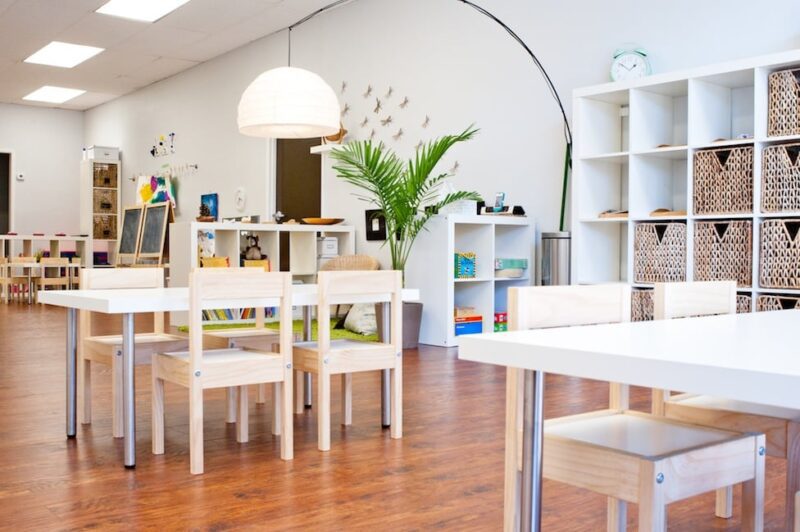As an educator with years of experience, I have learned that a well-decorated environment can significantly impact students’ concentration and emotional well-being. Minimalism in classroom decor can create a serene atmosphere that promotes a positive learning experience. In this article, I will share various calming classroom decor ideas tailored for middle school, embracing the principles of minimalism.
Why Minimalist Decor Works in Middle School Classrooms
The middle school years are critical for emotional and cognitive development. A calming environment can help reduce anxiety and distractions, allowing students to focus on their studies. Here’s why minimalism can be particularly effective:
- Reduces Clutter: A clutter-free space leads to a clearer mind.
- Encourages Focus: Fewer distractions help students concentrate better on lessons.
- Promotes Calmness: Soft colors and simple designs create a soothing atmosphere.
Key Elements of Minimalist Classroom Decor
When designing a minimalist classroom, consider the following elements:
Color Scheme
Choose a balanced color palette featuring soft, muted tones. Colors like light blues, greens, and pastels can create a tranquil environment.
Functional Furniture
Opt for simple, multifunctional furniture that promotes organization. Desks with built-in storage can help maintain a tidy space.
Nature-Inspired Elements
Introducing plants or natural materials can enhance the calming effect. Consider using low-maintenance plants such as succulents or pothos.
Personal Touches
Incorporate elements that reflect students’ identities, such as a collaborative art wall or a section for student achievements, but keep it minimal.
Minimalist Decor Ideas for Middle School Classrooms
1. Soft Color Palettes
Using calming colors can greatly influence the mood of the classroom. Here’s a comparison of effective color schemes:
| Color Scheme | Effect |
|---|---|
| Soft Blue | Promotes calmness and concentration. |
| Pastel Green | Enhances relaxation and reduces anxiety. |
| Warm Neutrals | Creates a comforting and inviting atmosphere. |
2. Open Spaces and Natural Light
An airy classroom with ample natural light fosters well-being. Arrange desks to maximize light and make space feel larger.
3. Minimal Wall Decor
Instead of overwhelming the walls with posters, choose a few key pieces that inspire growth, such as motivational quotes or student artwork framed simply.

Creating a Calming Atmosphere Through Textures
Textures play a vital role in designing a minimalist space. Here are some ideas:
- Wooden Elements: Use wooden desks and shelving to bring warmth.
- Soft Fabrics: Incorporate cushions or rugs in neutral colors for comfort.
- Glass and Metal Accents: These materials can add a modern touch without overwhelming the senses.
Tips for Integrating Minimalism in Your Classroom
1. Declutter Regularly
Set a routine for decluttering. Encourage students to keep only what they need at their desks.
2. Set Clear Guidelines
Establish rules for decor that promote a calm environment, like limiting wall space usage and restricting bright colors to a minimum.
3. Use Inspiring Quotes
Display a few well-chosen inspiring quotes in simple frames. Rotating these can keep the environment fresh without cluttering.
Pros and Cons of Minimalist Classroom Decor
| Pros | Cons |
|---|---|
| Promotes student focus | May seem too sterile if not done thoughtfully |
| Easier to maintain cleanliness | Less visual stimuli, which may not suit all learners |
| Encourages creativity and personal expression | Requires regular reassessment to keep it engaging |

Personal Experience: The Impact of a Calming Classroom
In my own experience, transitioning to a minimalist decor significantly changed the dynamic in the classroom. Students reported feeling less stressed and more engaged in discussions. Simple decor allowed them to focus on their work without the distraction of excessive visual elements. I witnessed firsthand how creating calm environments helped struggling students thrive.
FAQs about Calming Classroom Decor for Middle Schools
1. What are the best colors for a calming classroom?
Soft hues like light blue, pastel green, and warm neutrals are excellent choices as they promote calmness and focus.

2. How can I incorporate student artwork in a minimalistic way?
Frame select pieces and create a dedicated “student gallery” wall. Limit the number of artworks displayed to maintain minimalism.
3. Is minimalism suitable for all types of learners?
While minimalism benefits many students, it’s important to consider incorporating a few stimulating elements for those who thrive on visual stimuli. Balance is key!

4. How often should I refresh the classroom decor?
Consider refreshing your decor at the beginning of each term or season to keep the environment engaging without overwhelming students.